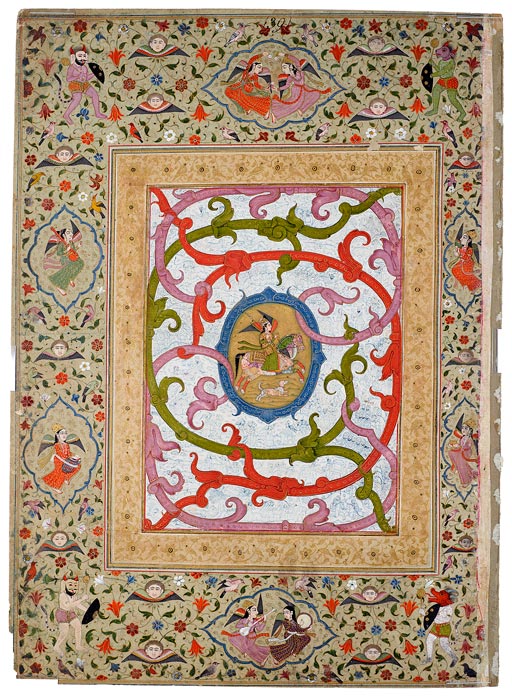
Composite drawing, or symplegma (intertwined), is documented in Islamic painting in Persia and Mughal India as early as the sixteenth century. Here, within an oval surrounded by acanthus scrolls, a peri (a supernatural being thought to have descended from a fallen angel) rides a horse made up of many smaller intertwined animals. The horse's tail, for instance, is actually a woman's flowing black hair. Between the vines are tiny blue drawings of animals—many in pairs—cherubs, men fighting monsters or served by angels, and Rustam killing a div (demon). This and the facing page (MS M.458.15 in the Read Mughal album) were made possibly in Kashmir during the second half of the eighteenth century.
The Read Mughal Album
Pierpont Morgan purchased the Read Mughal album, along with a Persian album, from Sir Charles Hercules Read, Keeper of British and Medieval Antiquities at the British Museum, in 1911. The Morgan purchase consisted of thirty folios (including both Indian miniatures and the Mughal portraits presented here), but Read owned at least forty-eight others, now widely dispersed. The leaves were probably once bound in several lacquered bindings. The identity of their compiler has not been established, but many borders date from the eighteenth and nineteenth centuries. The Mughal emperors of India commissioned biographies and were frequently portrayed by artists. Here the paintings are presented in the order of the emperor's reigns rather than the dates of the miniatures, starting with Bābur (r. 1526–30), the Muslim founder of the dynasty, and ending with Shāh Jahān (r. 1628–58), builder of the Taj Mahal.
